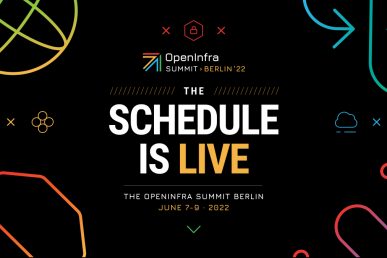Join the people building and operating open infrastructure at the inaugural Open Infrastructure Summit. The Summit schedule features over 300 sessions organized by use cases including: artificial intelligence and machine learning, continuous integration and deployment, containers, edge computing, network functions virtualization, security and public, private and multi-cloud strategies.
In this post we’re highlighting some of the sessions you’ll want to add to your schedule about private and hybrid cloud. Check out all the sessions, workshops and lightning talks focusing on these topics here.
Open-source networking: The useful, the scrap heap, and the broken
Open-source networking is still top of mind in the networking industry and the open-source world. While some argue it reached critical mass in 2015 it’s continued to drive forward at an increasing pace, say Cisco’s Kyle Mestery and Ian Wells. In this intermediate-level talk, they’ll cover how to effectively work across many upstream open-source networking projects. They’ll offer a comparison of how these projects take on work, how they consume this work and how they fold it into their projects as well as a light-hearted look at strategies that work and those guaranteed to fail. Details here.
Improving resource availability in CERN’s private cloud
Teams at CERN are working hard to upgrade the Large Hadron Collider for the next set of experiments kicking off in 2021. During the next run, the computational needs required to process all the data produced in the LHC are expected to increase dramatically. To meet these upcoming needs, the CERN private cloud is always looking into ways of optimizing and making more resources available to researchers. Jose Castro Leon and Spyros Trigazis will review the tools, based on OpenStack services including Mistral and Watcher, that allow CERN to automate the distribution of workloads, increase their efficiency and optimize the cloud environment. In this intermediate-level talk, the pair will also show upcoming work to push even the limits of their current service offering by optimizing workloads in Kubernetes clusters and preemptible instances. Details here.
How Blizzard Entertainment uses autoscaling for “Overwatch”
Blizzard Entertainment is a video game developer and publisher that has been using OpenStack as a private cloud to host its game services since 2012. This talk from Duc Truong and Jude Cross discusses the OpenStack autoscaling implementation at Blizzard to support its best-selling team-based shooter title “Overwatch.” The beginner-level case study will focus on the unique challenges of running video games in the cloud and presents the advantages of utilizing autoscaling. Details here.
Airskiff: Your on-ramp to Airship development
Airship is a platform that enables operators to reliably and repeatably provision production-grade cloud infrastructure using declarative configuration. Airship is a substantial project and it can be tough to know where to get started. Operator-scale target hardware, sizeable configuration documents and non-trivial deployment times challenge developers who want to quickly get started with Airship development.
This presentation by AT&T’s Matt McEuen and Drew Walters offers developers (as well as operators) a solution to quickly test their software workloads using Airship and to deploy their own code changes to Airship itself while demonstrating the flexibility and resiliency that Airship provides. Details here.
Self-healing on network failures with Vitrage, Mistral and Heat
A network failure in a complex system can have ripple effects throughout the system. For an application, especially in the world of NFV (but not only), quick recovery from failure is crucial.
In this session, Nokia’s Ifat Afek and Muhamad Najjarwe with EasyStack’s Rico Lin will show how Heat uses Vitrage and Mistral to guarantee self-healing of the Heat stack – either on the physical or virtual layer. Vitrage, the OpenStack Root Cause Analysis service, is used to analyze the system state and identify the affected resources. Mistral, the OpenStack workflow service, provides a workflow for healing and Heat automates the entire healing process.
They’ll demonstrate how these three projects work together to provide a new and easy way to self-heal your application with accuracy, and how to keep it unbroken and make sure everyone can use it. They’ll also talk about the self-healing SIG and discuss its future plans. Details here.
Giant leap upgrades
Deploying an OpenStack cloud in a production environment is a great achievement and sometimes overwhelming task in itself, says Jimmy McCrory of Box. Keeping that cloud up-to-date, even within a release cycle or two behind the latest, can sometimes feel impossible. His presentation will cover the steps that were taken to plan, test and perform OpenStack upgrades spanning four OpenStack releases (Mitaka to Queens) during single maintenance windows.
He’ll also be covering the mistakes made, lessons learned and tips for operators dreading their next, or even first, major upgrade.
Details here.
See you at the Open Infrastructure Summit in Denver, April 29-May 1! Register here.
Cover photo // CC BY NC
- Demystifying Confidential Containers with a Live Kata Containers Demo - July 13, 2023
- OpenInfra Summit Vancouver Recap: 50 things You Need to Know - June 16, 2023
- Congratulations to the 2023 Superuser Awards Winner: Bloomberg - June 13, 2023

)










